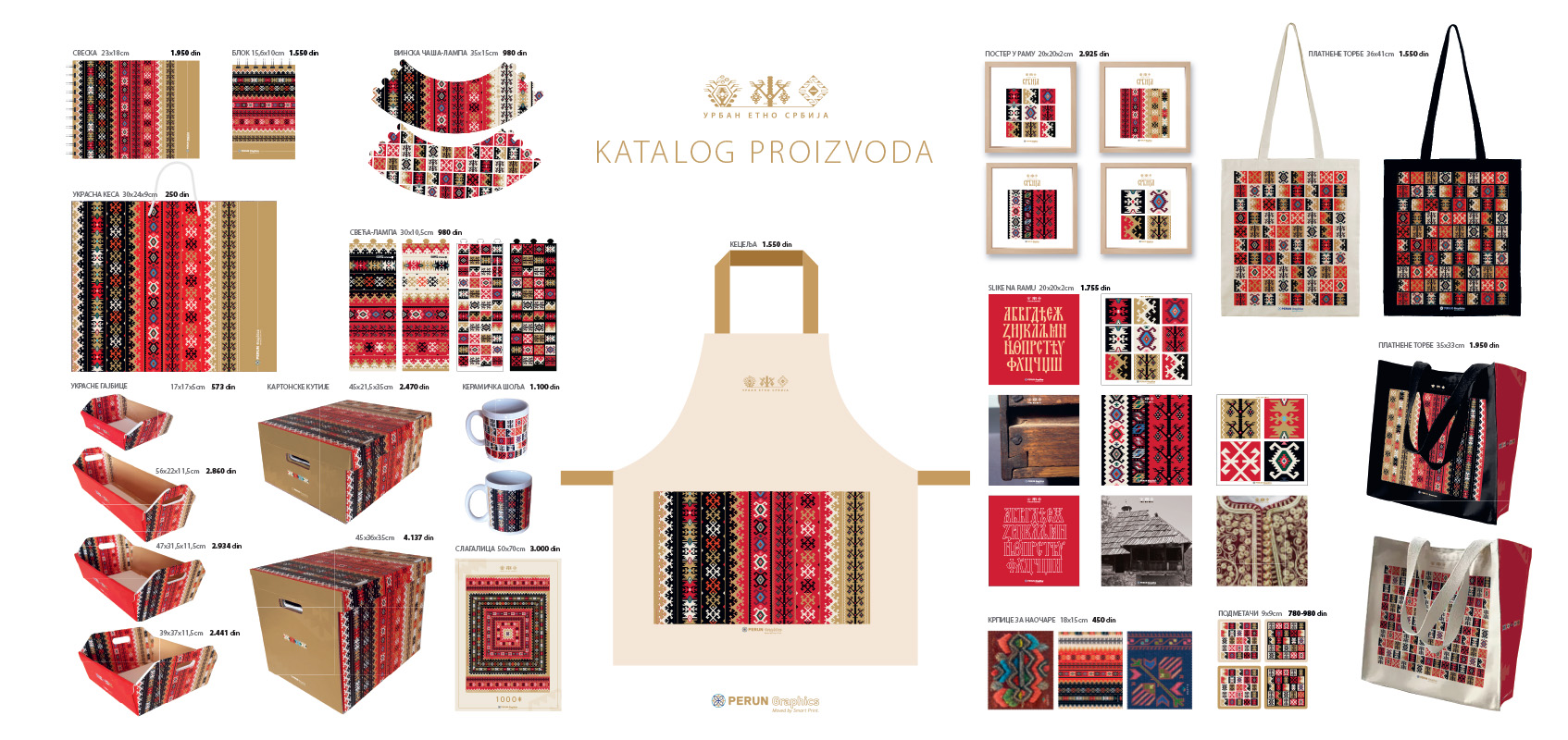
In 2019, at Grafix, we created the first brief for launching a private brand and online store, with the goal of introducing a series of mass-produced graphic industry products for everyday use.
We identified a critical lack of well-designed functional graphics amid the sea of low-quality mass-produced Chinese goods, which were disconnected from the spirit of our culture. For this project, we used a powerful creative approach to develop everyday functional items that would carry the spirit of our region in the culture we live in today. The launch of the 21st product with an ethnic aesthetic marked the initial assortment of the UrbanEtno program. Targeting both traditionalist and younger, more modern groups, we aimed to find a new expression and aesthetic. The products were beautifully artistically directed by our own design team, Darko Torgašev and Emina Radnović.
Within the brand, a desire, but also a need, arose to address the ethnic theme while respecting authenticity as much as possible. The initial guideline for this project was provided by the book Serbian Folk Motifs from 1936, edited by drawing professor V. Stevanović. In the introduction, the professor says:
“Our old folk motifs are disappearing, and their places are being taken by modern, foreign motifs that are unsuitable for our people. Allowing this folk treasure to perish would be a great loss for the enlightenment of our people.”

Nearly 100 years later, the professor’s words have a new task for contemporary Serbian designers. Professor Stevanović, through his book, has provided us with precise instructions for using old motifs and creating new ones. A particularly interesting section is where the professor talks about colors:
“The strongest effect is achieved by harmonizing three primary colors in this order: red, blue, and yellow. The effect is excellent when gold replaces yellow. Further, a good combination can be made from these three colors: red (purple), prussian blue, and yellow. Orange, green, and purple. White can also be used here as a separator or integral part of these colors, and ultramarine blue could replace purple…”
Our job was not only to master the language of folk motifs but also to recognize their application in objects we use today. Working on this theme was a great pleasure for us, and so far, we’ve developed 21 products and a large number of variations. Researching and immersing ourselves in the fairy-tale atmosphere of past times created magic and transported us to a period when harmony and balance with nature first gave birth to these ornaments, placing them into colors, and for all time, recording the cultural codes of an ancient people who knew how to stylize natural phenomena.
If we conclude this text in the spirit of Professor Stevanović, we can add that this work encourages pleasure and interest, ultimately leading to the development of imagination and a sense of beauty.
Our collection primarily speaks to the “aesthetically educated eye” and the “spiritually rooted soul.”


